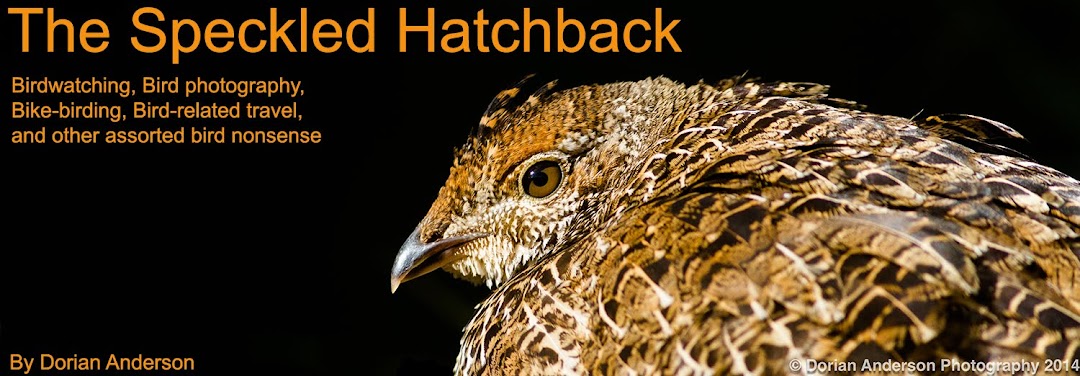Ariel view of San Mateo Bridge
Enter Bar-tailed Godwit, an Old World species which also breeds in Western Alaska. The bird is a rare but regular vagrant on the Pacific Coast, and I figured one would eventually appear in my Bay Area surrounds, a suspicion confirmed when an individual was recently discovered at Ora Loma Marsh in Alameda County.
Breeding plumage Bar-tailed Godwit from Adak, AK
Photo from Laura Keene (check out her flickr account)
Bar-tailed Godwit records from eBird
My godwit pursuit
Panorama of Ora Loma March
When the godwit was reported on the same late-afternoon high tide on Monday, I knew Tuesday was my day. I powered south out of San Mateo at 2pm, crossed the Dumbarton, and continued north along the eastern bayshore to arrive at Ora Loma at 4:20pm. The rising water had already concentrated hundreds of shorebirds in the marsh, and another birder (James Watts) and I split the task of scanning the roosting throngs, him from one end of the assembly and me from the other. James spotted the bird within a few minutes, and I bounded the 100 yards to his scope for a killer view of the sought rarity. The bird spent the next hour resting and preening before being flushed by a low-flying Turkey Vulture at 5:30pm. Half a dozen others arrived in that interval, and all enjoyed point-blank views of the rare shorebird.
Phonescoped winter plumage Bar-tailed Godwit
Bay Area bike bird #288
Traditional ABA bird #733 (#731 Lower 48)
The WNW headwind riding back across the Dumbarton and along the western bayshore was heavily impeding, but I fought through it and returned home at 8:20pm. Bike-birding celebrations are always broken into two parts, the first half in the field when the bird is observed and the second half when I return home safely. The godwit was my longest single-day chase since moving to the Bay Area, so my sofa felt great when I finally collapsed onto it to watch Deadliest Catch at 9pm!
It's worth mentioning the godwit was seen again at 7pm on Tuesday evening (after I'd departed) but not on subsequent days. In this instance, delaying for a day was the perfect move, but I'm sure I'll get burned at some point. It's inevitable in this game......






















